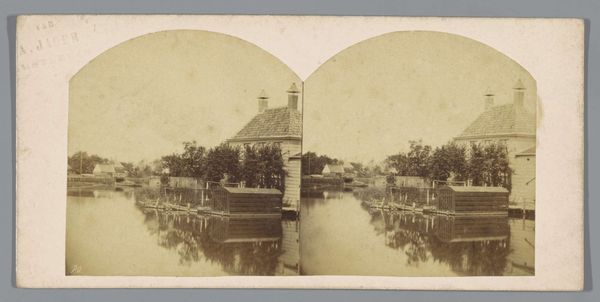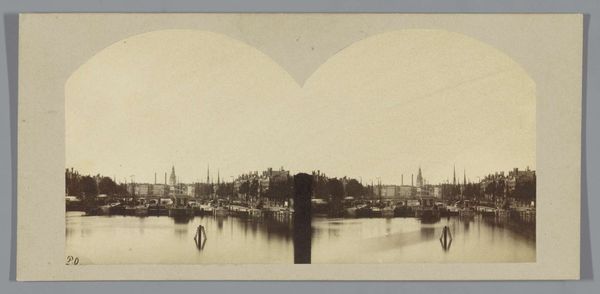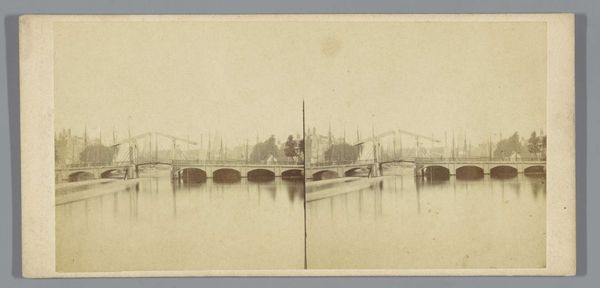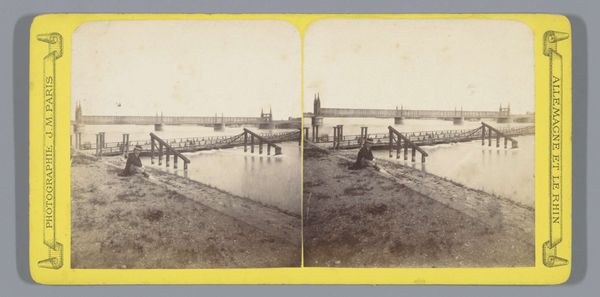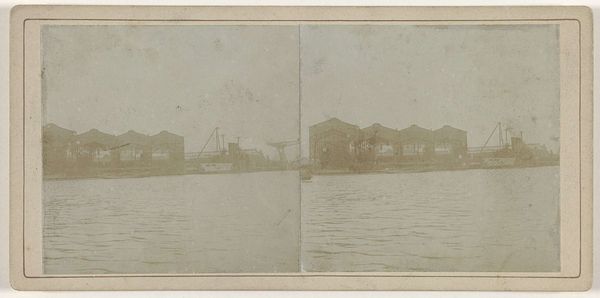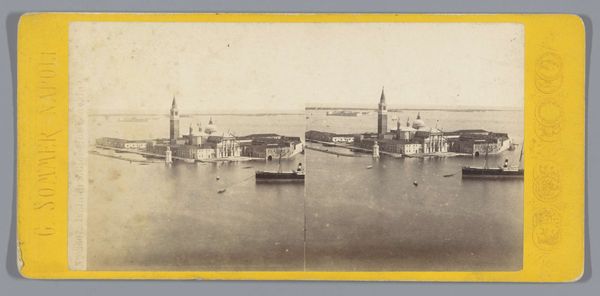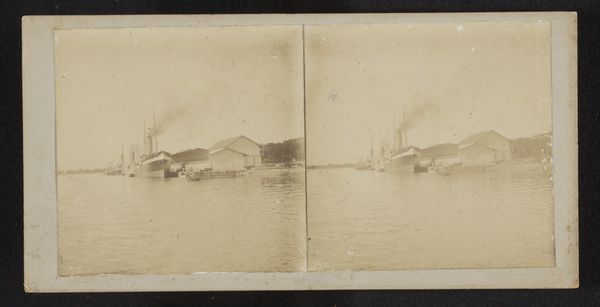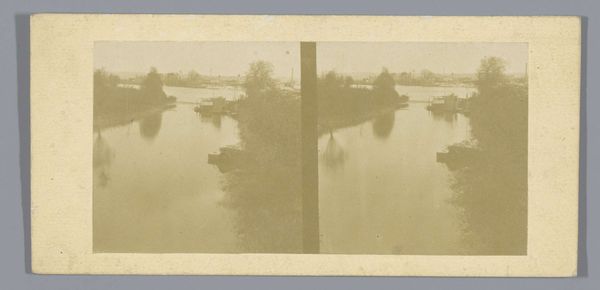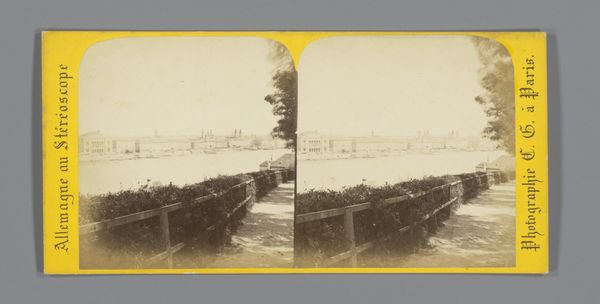
photography, gelatin-silver-print
#
landscape
#
photography
#
gelatin-silver-print
#
cityscape
#
realism
Dimensions: height 83 mm, width 174 mm
Copyright: Rijks Museum: Open Domain
Editor: Here we have "Ouderkerk aan de Amstel," a gelatin silver print photograph taken by Pieter Oosterhuis in 1859. It's quite interesting, with the duplicated imagery reminiscent of a stereoscope card. The stillness of the water and the geometry of the bridge are so calming. What catches your eye about this piece? Curator: Formally speaking, the most compelling aspect of this work is the meticulous attention Oosterhuis gives to the interplay of light and shadow. Note how the structural elements, particularly the wooden supports of the bridge, create a rhythm of vertical lines mirrored in the water. This repetition not only stabilizes the composition but also offers a sense of depth. What do you make of the tonal range evident in this photograph? Editor: Well, the limited tonal range makes it feel muted, almost monochromatic. I suppose the subtle variations are crucial for defining the forms, giving it texture. But what purpose do you think the stereoscopic duplication of the image serves beyond the technical process? Curator: The stereoscopic effect inherently prompts the viewer to actively synthesize two perspectives into one cohesive visual experience. The symmetry itself is significant. Did you consider how it calls our attention to the photograph as an object? Editor: Hmm, not really. So, the photograph becomes less about representing the scene and more about emphasizing its structure and the way we see? Curator: Precisely. This interplay is a constant feature of pictorial space: both illusionistic and material. Note, as well, how it anticipates some of the serial explorations we see later in minimalist sculpture, using duplication for effect. The reflections play with our depth perception to bring foreground and background together. Editor: That’s a really interesting perspective. Now I can appreciate the composition as being just as significant as the landscape itself! Curator: Indeed, and in appreciating the visual, we become conscious of photography's intrinsic qualities and how it shapes our gaze.
Comments
No comments
Be the first to comment and join the conversation on the ultimate creative platform.
